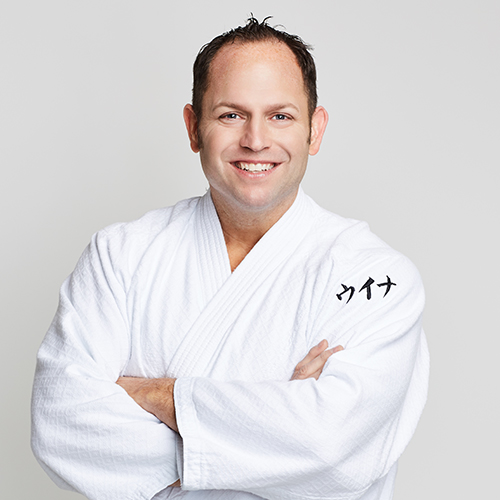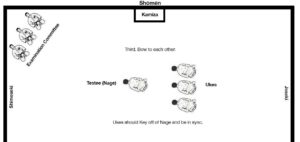Sensei 先生
The two characters that make up the term can be directly translated as “born before,” and imply one who teaches based on wisdom gained from age and experience. In general usage, it is used, with proper form, after a person’s name and means “teacher.” In Japan, the word is also used as a title to refer to or address other professionals or people of authority, such as clergy, accountants, lawyers, physicians and politicians or to show respect to someone who has achieved a certain level of mastery in an art form or some other skill, e.g., accomplished novelists, musicians, artists and martial artists.
In Aikido, a japanese martial art, this title, or designation, has a bit more meaning behind it. While it is common that when one reaches Shodan rank in Aikido, they may be addressed as “sensei,” each dojo typically has one sensei, or teacher, with additional instructors. While a teacher instructs, an instructor may teach. Being an instructor & a teacher are not, in fact, the same thing. An Instructor leads a class. They are a ‘Teacher in Training’ for the most part. This is also called Kenshusei. In most dojos, the Chief Instructor, typically 5th Dan & up are ‘Sensei’, & should be addressed as such. Whether that Chief Instructor has a teaching certificate, Shidoin or Shihan, He or She is Sensei.
Other senior students that teach at any black belt level should be referred to by their first or family name & san — unless he/she is teaching a class; then “sensei” would apply in the verbal setting at that time.
Like all Reiho (Etiquette), there is quite a range of application, understanding & importance across lots of dojos, organizations & styles. Back to the earlier point about a teacher versus an instructor, you have to earn the right to be a teacher, and with that to be addressed as one. It shouldn’t be assumed. You know you’ve gotten there when your students are addressing you as ‘sensei’ (teacher) without being told to. You should not refer to yourself as sensei. That shows ego and entitlement. I see new dojo operators do this. It really only belongs in a personal bio — it doesn’t need to be a social media sign-off or used otherwise.
In Aikido, there is a great meaning and responsibility to be a teacher and the sensei. It is the highest position at the dojo. And with it should come respect. But you have to give respect first to earn it. You have to address those teachers that came before you correctly. And in today’s social media climate it should extend there too.
I see juniors of mine, some Nidan, Sandan & even Yondan address a Technical Committee Shihan by their first name at a seminar and online. Or even worse, their first name-sensei. In other styles, and mostly in Western cultures, it has become more common to address the teacher by their first name, then sensei, or Sensei first, then using their first name became a thing. But this really doesn’t belong in Aikido.
When you make a reiho error anywhere as a martial artist, it stands out. It shows a lack of understanding and/or respect. I tend to see these kinds of mistakes with aikido practitioners that don’t perform rei (bowing) correctly too. When, how and to whom.
So, with this highly regarded term, used all over the world in different meanings, context can mean so many things. As an aikidoka, how & where you use it along with your understanding isn’t something. It’s everything.
5 Questions with our Chief Instructor – Part 2
5 Questions with our Chief Instructor – Part 2 Jared Heintz: Aikido is often praised for its applicability in self-defense situations. Could you discuss how Aikido techniques can be adapted to real-world scenarios, and what mindset one should cultivate in such situations? Weiner Sensei: As I approach 25 years of Aikido practice, I’ve realized that…
Rank Testing Bowing Reiho – Advanced
Rank Testing Bowing Reiho – Advanced Andy Demko Shihan likes to say, “The little things don’t mean a lot, they mean everything”. Everyone who has practiced in our dojo or visited has seen that we take Reiho (Etiquette) pretty seriously. In all that we do, practice. Bowing. Addressing each other & more. I learned a…
5 Questions with our Chief Instructor – Part 1
5 Questions with our Chief Instructor Jack Freund: Why is attending seminars so valuable? Weiner Sensei: Seminars are valuable because so many things can take place in that style of training. Whether the seminar is one day or an entire weekend, it is an opportunity for all your focus to be on Aikido training. It…



